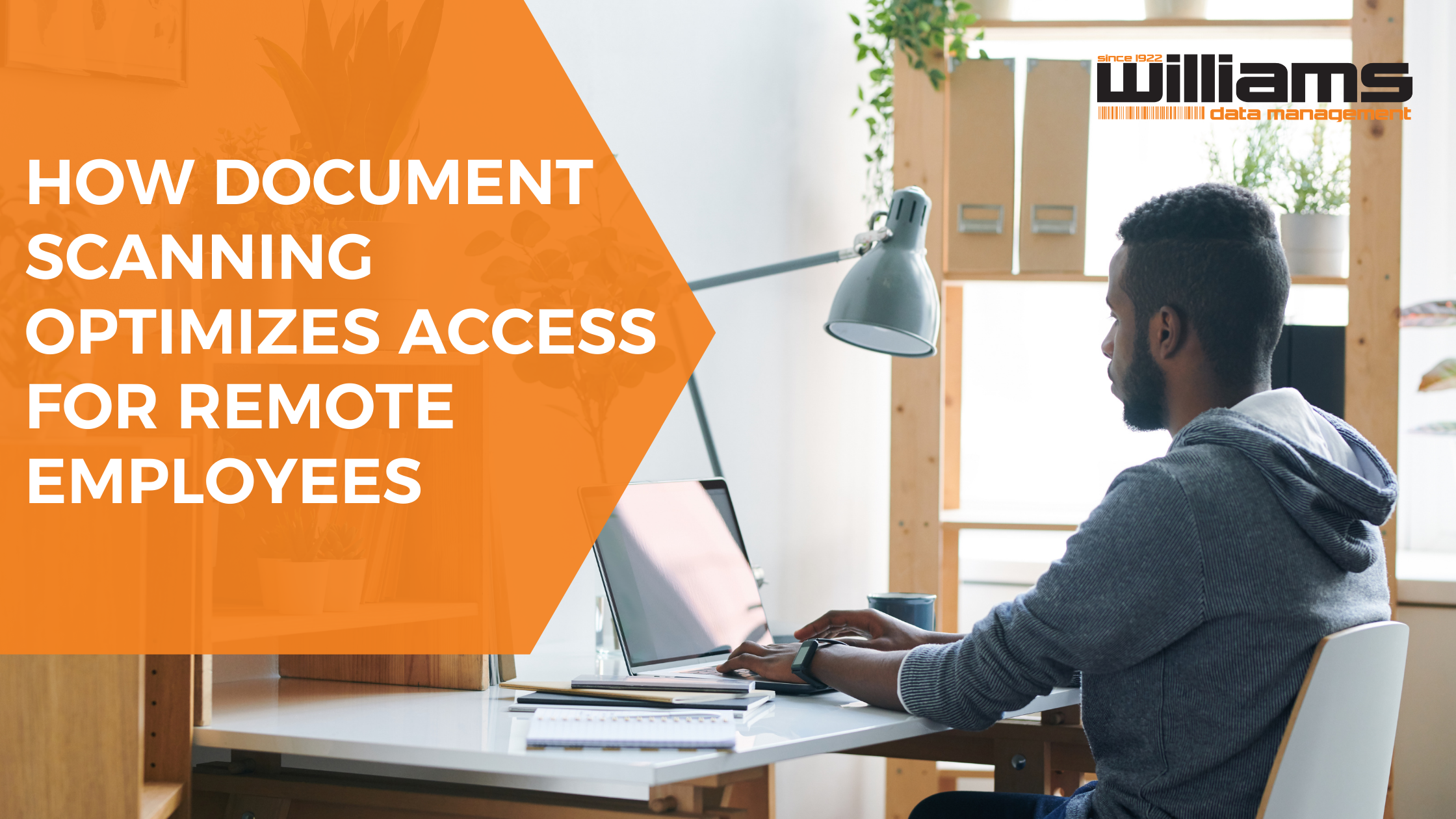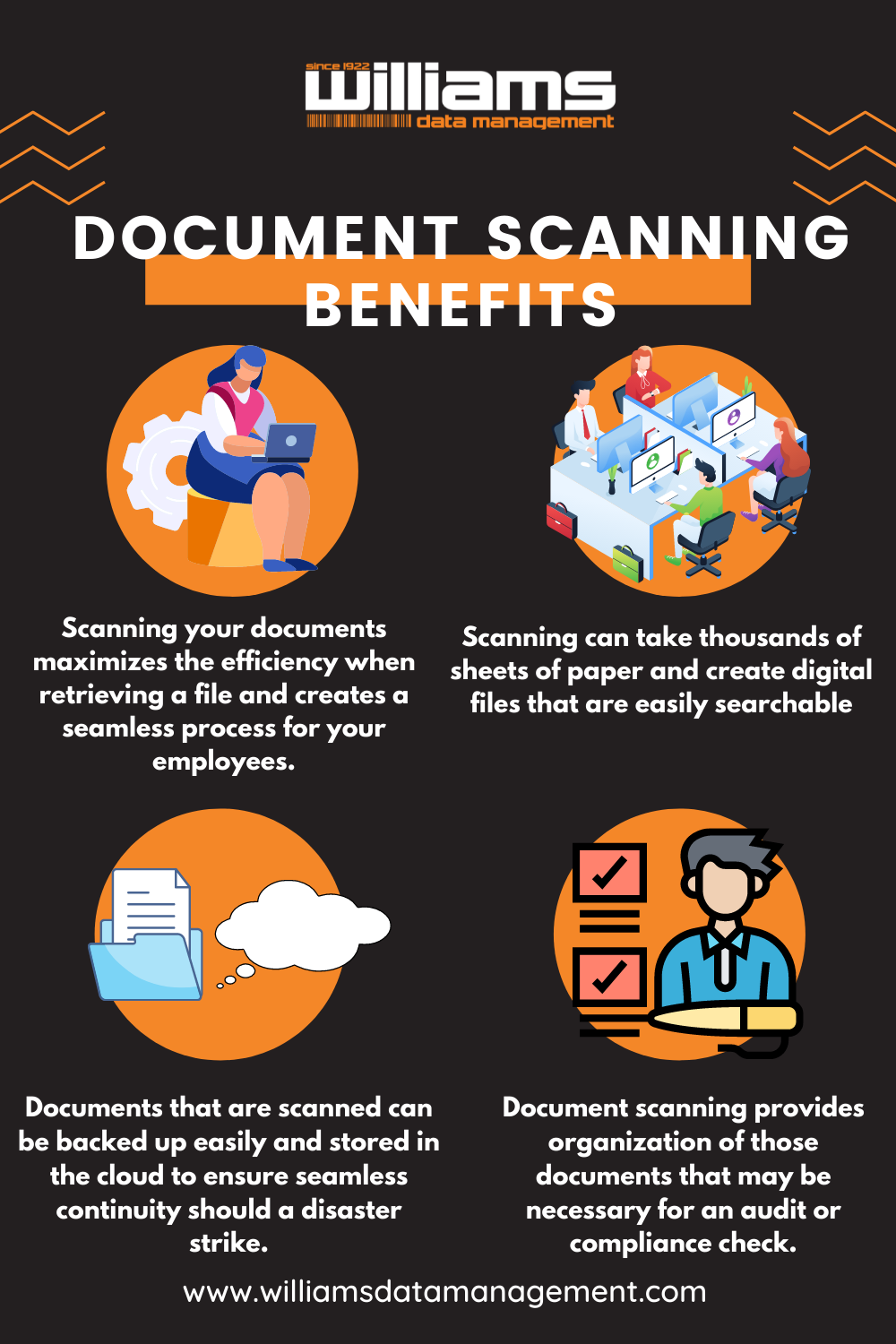
The last 2 years have been transformative for individuals and businesses. From an in-office environment to a completely remote workforce and a hybrid between the two, companies and employees have been separated and forced to adapt to the new workplace. By now, one of two things has either happened. Organizations have either embraced it or faced a continued struggle to operate as efficiently as possible. Companies finding themselves in the latter category most likely experience common workplace pains such as having trouble getting a hold of a colleague or experiencing problems remoting into systems. But one often overlooked concern is the ability for employees to access hard copy documents. Before it was a simple procedure, and anyone could request and access a document in person or retrieve it themselves. But now with personnel spread out across multiple locations, how is that seamless hard copy document access transaction achieved?
Enter document scanning.
What is document scanning?
Simply put, document scanning is the process in which hard copy documents are converted into digital files that are easily distributable across organizations. Those files are generally generated as .PDF files but can also be converted into other formats as necessary. Think of it this way. We commonly will write down a quick note or jot down a name and address quickly because that’s what we have grown accustomed to doing. With this sort of practice taking place over several years and multiplied by multiple personnel engaging in the practice, the amount of institutional knowledge that accumulates on these sorts of notes that is still needed can rapidly grow. In the not so long ago past, it was easy to ask a colleague for the note that contained a piece of information about a customer or statement. But now when those notes are less accessible, document scanning allows organizations to take what they have in their hard copy repository and have them converted into digital files. Voila! Access is once again restored through any file sharing system commonly used in today’s workplace.
What are the significant benefits to document scanning for organizations?
The benefits that can be realized with document scanning are unique to each organization but in general there are several that can be seen immediately, especially for those companies that have a larger collection of paper files.
Some of these include:
- Freeing up valuable space
- Improving disaster recovery
- Preventing a loss of information
- Improving employee processes
- Providing file access to remote employees
- Improving security and compliance
Again, these are universal to most businesses, and often, more benefits than just these six come with choosing document scanning as a solution to creating better workflows and handling of paper documents.
The benefit to the remote workforce
In the scenario described a couple paragraphs above, traditionally workers would be able to access notes, statements, client forms, invoices, etc. in person. Of course, this type of process presented its own hurdles mainly manifested in the time spent by an individual to search and access a file.
Implementing a document scanning solution reduces that time spent from minutes to seconds. After documents are scanned and delivered, they become easily searchable digital files, so a physical search that used to last 20 minutes now only takes 20 seconds. The speed in which companies can respond to inquiries and communicate ideas with colleagues becomes almost instantaneous.
And of course, the process for file sharing is greatly improved. When documents are converted to searchable .PDF files, there becomes no need to have physical documents on hand other than to maintain compliance and follow the procedures set forth by a retention policy. The converted files can be accessed through file sharing systems such as Sharepoint or Dropbox, providing the speed which is demanded of today’s transactions.
What to consider
Document scanning places emphasis on the speed and accuracy in which companies are able to access documents, so many times, that becomes the primary motivator for companies to consider when moving forward. And with a more hybrid workforce, not providing access to documents efficiently and securely can present all sorts of complications. These two primary factors alone create the question of how it can be done better? And as you look at document scanning as a solution, you will find that digital conversion streamlines processes and positions your business for the future.